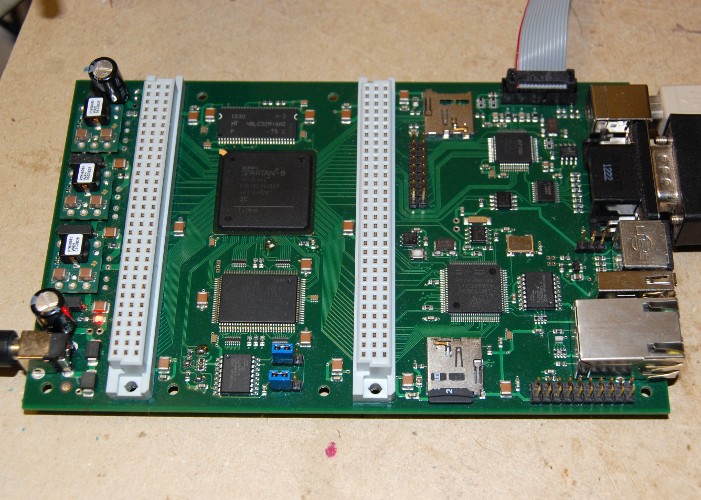Apologies for the lack of recent updates. I haven’t been completely idle but my time’s being filled with other things at the moment, including replacing light fittings, hanging pictures and learning the guitar!
Despite the silence, I’ve not been completely inactive on the FPGA front, however, and I’m still slowly building my library of demo projects for my “Flex” variant of the ZPU processor. In the process I’m redesigning and streamlining a lot of the components that made up the TG68MiniSOC project, so that will be updated with the results before too much longer, and I’ve also started branching out from being purely Altera-based into Xilinx too.
This last development is the result of reader Emanuel Stiebler very generously supplying me with a Spartan-6 board!

This has an XC6SLX45 FPGA, 32 megabytes of SDRAM, 4 megabyte of SSRAM, a microcontroller, dual micro-SD slots (one for the µC, one for the FPGA) and an assortment of IO ports.
I’ve already ported a few of the ZPU Demos to this new board (and a couple of the simpler ones to the original Minimig board while I’m at it!) but will post about the process in more detail soon.


